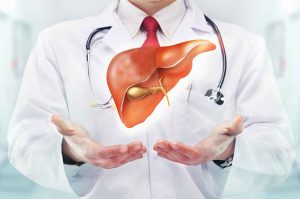
The liver disease treatment market refers to the products, services, and solutions available for the treatment of liver diseases such as liver cirrhosis, hepatocellular carcinoma (HCC), and non-alcoholic fatty liver disease (NAFLD). The liver disease treatment market is growing due to increasing incidence of liver diseases, growing demand for minimally invasive treatments, and the development of new drugs and treatments.
The liver disease treatment market is segmented into several categories including pharmaceuticals, medical devices, and surgical treatments. Pharmaceuticals include drugs used to treat liver diseases such as antivirals, immunomodulators, and antifibrotics. Medical devices include liver transplantation systems, stents, and catheters. Surgical treatments include liver transplantation, liver resection, and ablation procedures.
Unfortunately, liver cirrhosis cannot be cured. Cirrhosis is a condition where the liver has been significantly damaged and scarred to the point that it cannot function properly. While the progression of cirrhosis can sometimes be slowed with proper medical treatment, the liver damage is permanent and cannot be reversed.
However, with early diagnosis and appropriate management, the progression of cirrhosis can be slowed, and many people with cirrhosis are able to live full and productive lives. Treatment options may include lifestyle changes, medications, and in some cases, liver transplantation. It’s important to work closely with a healthcare provider to develop a treatment plan that is right for you.
Get Sample PDF Report with Graphs and Figures Here
Liver cirrhosis is a progressive condition that usually develops over a number of years. It’s typically categorized into four stages, based on the severity of liver damage:
- Compensated cirrhosis: In this stage, the liver is moderately damaged, but it is still able to perform its functions adequately. There may be few or no symptoms at this stage.
- Decompensated cirrhosis: In this stage, the liver’s ability to function is significantly impaired, and symptoms begin to appear. This may include ascites (a buildup of fluid in the abdomen), jaundice (yellowing of the skin and eyes), and hepatic encephalopathy (a type of brain dysfunction).
- End-stage cirrhosis: At this stage, the liver has been severely damaged and can no longer function properly. This can lead to life-threatening complications, such as liver failure, portal hypertension (high blood pressure in the blood vessels that lead to the liver), and variceal bleeding (bleeding from veins in the esophagus or stomach).
- HCC (Hepatocellular carcinoma): In some cases, cirrhosis can lead to the development of liver cancer (hepatocellular carcinoma). This is the most advanced stage of cirrhosis and is considered life-threatening.
It’s important to note that not everyone with cirrhosis will progress through all four stages, and the progression of the disease can vary greatly from person to person. Early diagnosis and appropriate management can slow the progression of cirrhosis and prevent or delay the development of serious complications.
Recent trends in liver cirrhosis include:
- Increasing incidence: The incidence of liver cirrhosis has been increasing globally in recent years, largely due to the rising prevalence of risk factors such as obesity, diabetes, and viral hepatitis.
- Improved diagnosis and management: Advances in diagnostic techniques and treatment options have led to improved outcomes for people with liver cirrhosis. For example, new drugs and therapies have been developed to help manage symptoms and slow the progression of the disease, and liver transplantation has become a widely accepted and successful treatment option for end-stage cirrhosis.
- Greater awareness: There has been a growing awareness of the importance of early detection and treatment of liver cirrhosis, and efforts are underway to raise awareness of the risk factors and symptoms of the disease.
- Focus on prevention: There is increasing emphasis on preventing liver cirrhosis by addressing its underlying causes, such as excessive alcohol consumption, viral hepatitis, and fatty liver disease. Public health campaigns and preventive measures, such as vaccination for hepatitis B and C, are being implemented in many countries to reduce the incidence of liver cirrhosis.
Overall, these trends reflect a growing recognition of the importance of liver cirrhosis as a public health issue, and a commitment to improving outcomes for people affected by the disease.
There are several major companies involved in the research, development, and commercialization of products and treatments for liver cirrhosis. Some of the largest pharmaceutical companies that have a presence in this field include:
- Gilead Sciences: Gilead is a biopharmaceutical company that specializes in the development of treatments for viral hepatitis, including hepatitis B and C, which are major causes of liver cirrhosis.
- AbbVie: AbbVie is a research-based pharmaceutical company that develops and commercializes treatments for various liver diseases, including cirrhosis. The company’s portfolio includes drugs for the treatment of hepatic encephalopathy, a complication of cirrhosis.
- Bristol Myers Squibb: Bristol Myers Squibb is a global biopharmaceutical company that develops and commercializes treatments for a variety of medical conditions, including liver cirrhosis. The company’s portfolio includes drugs for the treatment of viral hepatitis, which is a major cause of cirrhosis.
- Roche: Roche is a pharmaceutical company that specializes in the development of treatments for liver diseases, including cirrhosis. The company’s portfolio includes drugs for the treatment of viral hepatitis, as well as diagnostic tests for liver disease.
- Merck: Merck is a pharmaceutical company that develops and commercializes treatments for a variety of medical conditions, including liver cirrhosis. The company’s portfolio includes drugs for the treatment of viral hepatitis, which is a major cause of cirrhosis.
These are some of the largest companies in the field of liver cirrhosis, but there are many smaller companies and academic institutions also actively involved in research and development. It’s worth noting that liver cirrhosis is a complex and challenging disease, and there is still much work to be done to fully understand its underlying causes and develop effective treatments.

